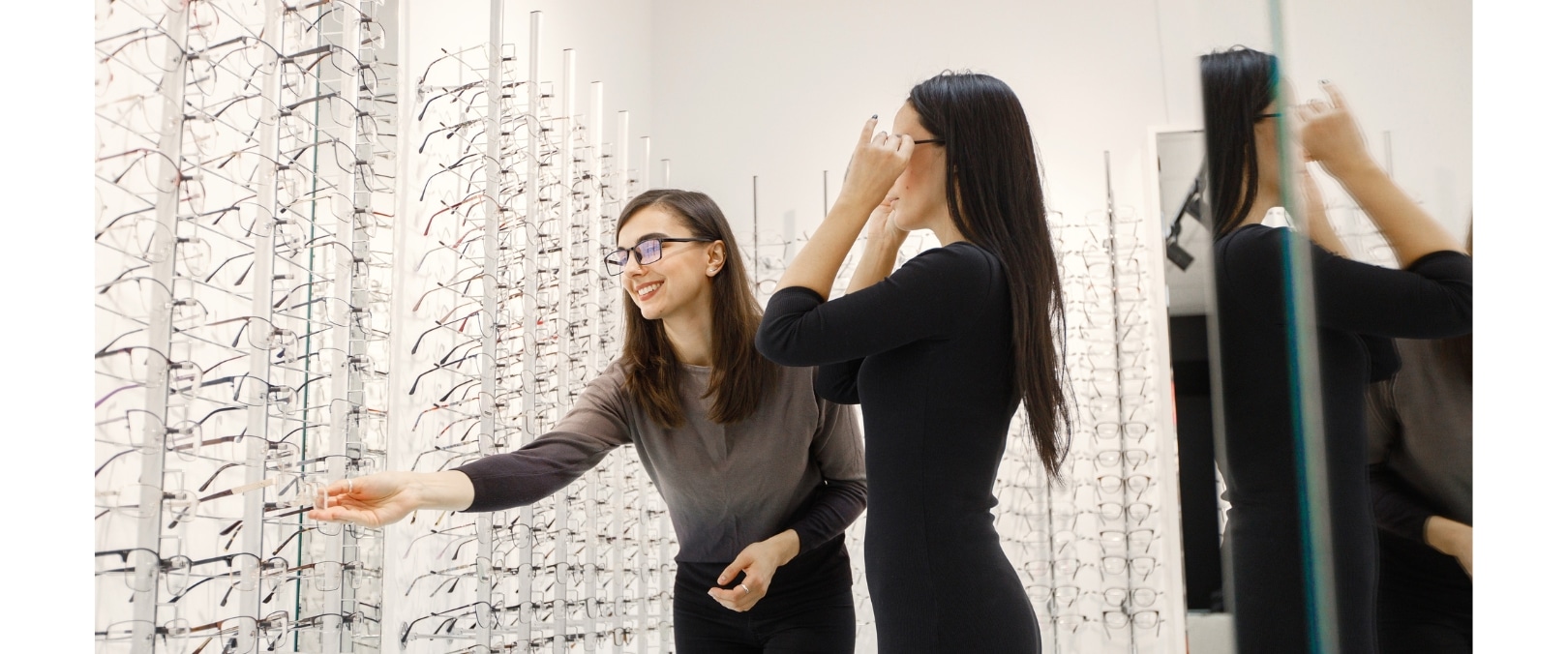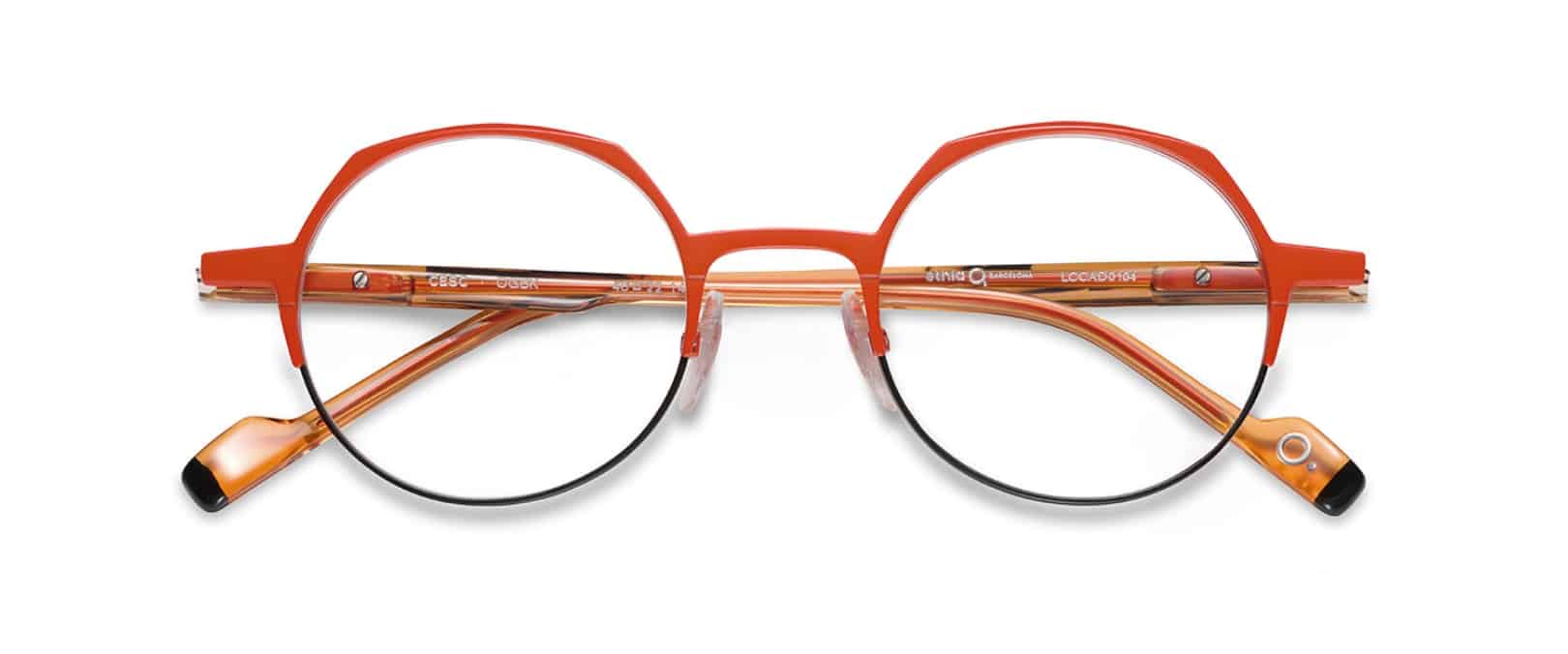Balancing Style and Functionality in Frame Selection
Monday, March 4 2024 | 09 h 54 min | Frames Fashion
By Tina Guenther
From the moment a patient steps into the dispensary, they are met with a unique prescription and a set of preferences. Often, these preferences do not align with what is best for the patient or what we have to offer. In an era where larger frame sizes are in high demand, it’s challenging to inform someone that their high prescription or specific needs are incompatible with the trendy frames they’ve chosen.
Determining what will meet the needs of the patient you’re assisting involves considering several factors: the preferred style, frame size and eye shape, price, etc. Essentially, it boils down to two critical factors: style and functionality. The question then arises: where is the balance, and how can we enhance our services in the selection process? Although opticians perform the task of recommending frames and lenses numerous times a day, for most patients, selecting a frame is a decision that will impact them for years to come.
While focusing on function is crucial, it is equally important to invest time in finding a style that complements the facial features and personal style of the patient. In instances where you may opt for a small rectangular frame believing it to be the most flattering, it may not satisfy a patient who initially desired a larger round frame. Even if the patient trusts your judgment at the moment, they may later feel disappointed and unheard.
How, then, do we as opticians strike this balance?
As opticians, we are trained to find a balance between a patient’s preferred style and what is most appropriate for their optical needs. This approach varies with each individual. For those with low prescriptions, the range of stylistic options is considerably broad. In contrast, a patient with a high prescription might end up with thick, heavy lenses that could alter the appearance of their eyes to onlookers, a realization that can be disheartening when they discover their options are limited.
To prepare for such scenarios, it is essential to offer a diverse array of frames capable of catering to a wide range of patients, not just the larger, more colorful, or embellished frames.
Occasionally, patients enter the dispensary convinced they know what they want, which may not always be the most suitable choice. Ultimately, it falls upon the optician to find a compromise, where frame size and fit can significantly influence the outcome. These details, often overlooked by patients, assume that style precedes functionality, an assumption that can lead to dissatisfaction.
Considering the optician’s perspective can sometimes complicate the experience for our patients. What seems straightforward to opticians can result in vague explanations. To mitigate this, it’s vital to thoroughly explain the frame selection process, emphasizing the goal of finding eyeglasses that perfectly fit the patient.
“During my last visit to a dispensary, the optician clarified which frames would best suit me and the necessity of my new prescription. I left feeling more informed than upon arrival, and quite satisfied with my selection,” shared Danny Peters, a former patient.
Selecting a frame size that matches the patient’s head and minimizes eye shape can make a high prescription less noticeable and lighter. While patients might be tempted to choose larger frames for style reasons, opting for a more suitable size can provide comfort and better support from the nose and ears.
This is where communication often falters: while opticians prioritize functionality, patients may focus on style. Without clear communication, this discrepancy can lead to patient dissatisfaction.
Countering Media Influence
In popular culture, large frames are mainstream, with advertising typically showcasing models with thin lenses. This portrayal can mislead, as not everyone can achieve this look due to various visual needs.
It’s easy to view style and functionality as separate entities. However, as opticians, our role is to demonstrate how these two aspects can complement each other, ensuring patients never feel limited in their choices, regardless of their needs. Promoting an inclusive selection for those requiring specific accommodations is a step toward making everyone feel acknowledged.
Changing Our Approaches
Style and functionality can coexist harmoniously if we recognize and address the needs of all patients, creating an environment where neither aspect overshadows the other. Balancing these elements can be challenging, but with focused effort, progress is achievable. As opticians, advancing patient care is our forte.
Experience and the acquisition of new fitting techniques can enhance our patient care strategies. For visual learners, displays comparing different lens materials and frame sizes can elucidate the impact of lens thickness and size. Understanding and educating patients about their choices is paramount.
Ensuring our dispensaries offer a wide range of frame sizes and styles is also crucial. A limited selection can be discouraging, especially for patients with high prescriptions needing smaller frames. A varied inventory, coupled with knowledgeable and empathetic staff, significantly enhances the patient experience.
For many, selecting frames and lenses is a daunting task, with choices affecting them for years. Detailed explanations, both verbal and visual, can alleviate concerns and boost confidence in their decisions. Ultimately, the right pair of eyeglasses should instill confidence with every wear.

Around two years ago, Tina Guenther worked as a lab technician in a dispensary. The optician who trained Tina encouraged her to look into the online optical programs offered by NAIT and what opticianry has to offer. Tina is currently in her second year of the eyeglass program.
Tina is the winner of the Optik Opticianry Writing Contest.
Want to see more like this article? Click here to subscribe to our FREE print magazines and e-newsletters!








